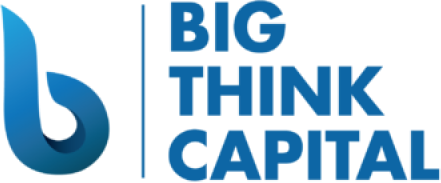Understanding Future Interest Rate Cuts and Their Impact on Small Businesses in 2025
Estimated reading time: 5 minutes
- Lower interest rates can significantly reduce borrowing costs for small businesses.
- Understanding eligibility criteria for funding is essential to securing favorable financing options.
- Evaluate various financing options beyond just interest rates.
- Be cautious of common pitfalls when navigating lower interest rates.
Table of Contents
- What Future Interest Rate Cuts Mean for Small Businesses in 2025
- Eligibility or Decision Factors Owners Actually Face
- Funding Options Overview Tied to Interest Rate Changes
- How to Evaluate Costs, Terms, and Trade-offs
- Common Pitfalls and How to Avoid Them
- Implementation Checklist for Securing Financing
- Actionable Takeaways
- Internal Connection
- Call to Action
- References
As we look toward 2025, many small business owners are wondering what lower interest rates might mean for their operations and growth opportunities. Following recent announcements, including the insightful speech by Federal Reserve Chair Jerome Powell on February 22, 2025, the prospect of interest rate cuts has sparked discussions among financial decision-makers in various industries. Understanding this landscape is crucial for small businesses seeking funding.
Lower interest rates can provide much-needed relief to business owners by reducing borrowing costs. However, it’s important to grasp not just the immediate benefits but also the broader implications for financing, investments, and market conditions. This blog will explore how these anticipated changes can affect small businesses, the financing options available, and actionable strategies for leveraging this financial environment effectively.
What Future Interest Rate Cuts Mean for Small Businesses in 2025
Lower interest rates typically encourage borrowing and investment. As of 2025, many small businesses might find it easier to access funds at a lower cost. According to Powell’s speech, the aim of these cuts is to stimulate the economy, which can lead to increased consumer spending and, subsequently, greater demand for products and services.
For small businesses, this environment can translate into several advantages:
- Cost Savings: Reduced loan payments can free up cash flow for other operations or growth initiatives.
- Expansion Opportunities: Lower costs can make it easier to invest in new equipment or hire additional staff.
- Competitive Edge: Easier access to financing can allow savvy business owners to capitalize on investment opportunities before their competitors do.
Eligibility or Decision Factors Owners Actually Face
While lower interest rates are beneficial, eligibility for funding remains a critical factor for small businesses. Many lenders consider various criteria when assessing loan applications:
- Credit Score: A higher credit score increases the likelihood of securing favorable terms.
- Business Age: Established businesses often qualify for better rates compared to startups.
- Revenue Streams: Demonstrating consistent revenue is vital to instill confidence in lenders.
Understanding these factors can help business owners prepare before they approach lenders for financing. Each lender may have different requirements, so it may be beneficial to explore multiple options.
Funding Options Overview Tied to Interest Rate Changes
With potential interest rate cuts on the horizon, various financing options become more accessible for small businesses:
- Traditional Bank Loans: With lower rates, these loans can become more enticing for larger sums over extended periods.
- SBA Loans: Typically lower-interest; they are backed by the government and often come with favorable terms.
- Equipment Financing: With cheaper rates, businesses can finance new equipment with manageable payments and a clear ROI.
- Merchant Cash Advances: Although they typically carry higher rates, a lower interest environment may encourage more competitive offers.
- Lines of Credit: These can be a flexible option for businesses looking to cover short-term working capital needs during slower periods.
Each option varies in terms of cost and benefits, so it’s crucial to assess which product aligns best with your financial situation and strategic goals.
How to Evaluate Costs, Terms, and Trade-offs
When considering financing options, evaluating the overall cost of borrowing goes beyond just the interest rate. Small businesses should take a comprehensive approach:
- APR and Total Cost: Look beyond the interest rates to calculate the annual percentage rate (APR) that includes fees and additional costs.
- Payment Terms: Understand whether the loan has fixed or variable rates and how that impacts your long-term budget.
- Prepayment Penalties: Some loans impose fees if paid off early; clarify these terms upfront.
Taking the time to do thorough research and calculations will help ensure that small business owners are making informed decisions that benefit their bottom line.
Common Pitfalls and How to Avoid Them
In the rush to take advantage of lower interest rates, small business owners should be wary of common pitfalls. Here are ways to avoid them:
- Rushing into a Decision: Take the time to shop around and compare different financing options to find the best fit.
- Ignoring the Fine Print: Always read the terms and conditions carefully to avoid unexpected costs.
- Overextending Commitments: Assess your ability to repay before committing to large loans or multiple financing options.
Implementation Checklist for Securing Financing
Here’s a streamlined checklist to implement as you consider financing options:
- Review financial statements and credit reports.
- Determine your funding needs and how much you can afford to borrow.
- Research various financing options and interest rates.
- Prepare necessary documentation for applications.
- Engage with multiple lenders to compare offers.
Actionable Takeaways
- Understand how lower interest rates can reduce borrowing costs and increase your ability to finance growth.
- Research your eligibility and carefully prepare your application to enhance your chances of receiving favorable terms.
- Evaluate financing options in terms of total costs and repayment structures, not just interest rates.
Internal Connection
At Big Think Capital, we specialize in helping small businesses navigate their funding options. Understanding the changes in interest rates can empower you to make better financial decisions. Our experts are ready to assist you in evaluating your options and securing the best possible funding for your needs.
Call to Action
If you’re ready to explore financing options tailored to your small business, visit Big Think Capital for more information or to speak with one of our knowledgeable funding experts.
This article provides educational information only and does not constitute legal, tax, or investment advice.
References
- Federal Reserve Chair Jerome Powell’s Speech on Future Interest Rates (Federal Reserve, 2025)
- SBA Loan Programs Overview (U.S. Small Business Administration, 2025)
- Understanding Equipment Financing (Investopedia, 2025)
- What is a Merchant Cash Advance? (NerdWallet, 2025)
- Using a Business Line of Credit (Forbes, 2025)






